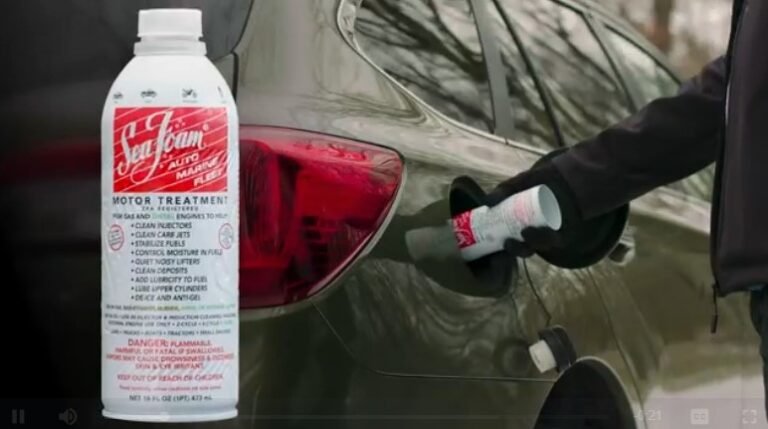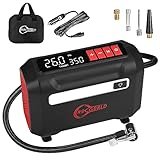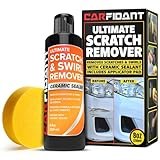10 Best RV Accessories for Cold-Weather Trips: Stay Cozy & Save…
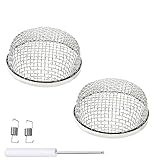
Are you dreaming of a peaceful winter camping trip, but worried about the biting cold? Does the thought of frozen pipes and expensive heating bills make you second-guess your adventure? You’re not alone. Many RV enthusiasts struggle with how to keep their home-on-wheels comfortable and safe when the temperature drops. It’s a common challenge that can turn a dream getaway into a chilly ordeal.
Still unsure which 10 Best RV Accessories for Cold-Weather Trips suits your daily use? Start by listing must-have features, then match them to budget and real scenarios (work, travel, home). Check build quality, warranty, and any day-one accessories. Finally compare trade-offs like size, noise, battery life or upkeep so you buy with confidence. Use the table below to scan pros and cons at a glance and shortlist the models that truly make sense for you.
| Product Image | Product Name | Best For | Prices |
|---|---|---|---|
 |
2-Pack RV Heater Vent Cover | Vent Protection | Prices |
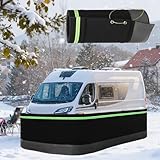 |
39-Foot RV Insulated Skirting Ki | Mid-size Trailers | Prices |
 |
65-Foot RV Insulated Skirting Ki | Large Rvs | Prices |
 |
85-Foot RV Insulated Skirting Ki | Extra-large Rigs | Prices |
2-Pack RV Heater Vent Cover

If you’re tired of losing precious heat through your RV’s roof vents on chilly nights, this 2-pack of heater vent covers is the simple and affordable solution you’ve been looking for.
The main benefit is creating a pocket of trapped air that acts as fantastic insulation, which I found kept my RV noticeably warmer and reduced my heater’s runtime. For example, on a 35-degree night, my furnace kicked on far less frequently, saving my battery power for the morning coffee.
Made from durable, UV-resistant polypropylene, these covers feel sturdy and are built to last through sun and snow. The simple push-pin installation means you can have them secured in under a minute without any tools, making this a no-brainer upgrade for any cold-weather camper.
Pros:
- Significantly reduces heat loss and drafts
- Very easy, tool-free installation
- Durable and weather-resistant construction
- Helps conserve battery power by reducing furnace use
- Good value with two covers in a pack
Cons:
- Must be removed before driving or operating the vent fan
- Can be tricky to install in very high winds
- Not as effective in extremely harsh, sub-zero temperatures
39-Foot RV Insulated Skirting Ki

If you’re planning to extend your RV season into the colder months, this insulated skirting kit is your perfect solution for keeping the chill at bay.
The core benefit is creating a thermal barrier that traps heat under your rig, which can dramatically reduce your heating costs. For example, by blocking the wind from whipping under your floors, your furnace won’t have to work nearly as hard to maintain a cozy interior temperature.
Beyond insulation, the heavy-duty vinyl material is impressively durable against UV rays and moisture, and the simple panel-and-stake installation system means you can set it up or take it down without any special tools. It’s a robust and user-friendly choice for serious cold-weather camping.
Pros:
- Significantly reduces heat loss and lowers propane costs
- Durable, waterproof, and UV-resistant vinyl material
- Straightforward installation with no tools required
- Helps protect your RV’s underbelly and plumbing from freezing
Cons:
- Can be tricky to get a perfectly snug fit on uneven ground
- Panels may be difficult to store due to their length
- Not the most aesthetically pleasing option for some
65-Foot RV Insulated Skirting Ki

If you’re planning to extend your RV season into the chilly months, this insulated skirting kit is your perfect solution for staying warm and saving on heating costs.
The core feature is its thick, double-bubble insulation that creates a crucial thermal barrier. This barrier stops cold air from swirling under your rig and prevents your precious heat from escaping through the floor. Think of it like putting a cozy winter coat around the base of your RV, which can make a dramatic difference in your indoor comfort.
Beyond warmth, the heavy-duty vinyl material is impressively durable against wind, moisture, and UV rays. The kit is also designed for a straightforward installation with its pre-cut panels and strong magnetic strips and stakes, making it a reliable and hassle-free choice for any cold-weather adventurer.
Pros:
- Excellent insulation significantly reduces heat loss
- Heavy-duty, weather-resistant vinyl construction
- Magnetic and stake system allows for relatively easy setup
- Helps protect utility connections and underbelly from freezing
- Can lead to substantial savings on propane or electric heating
Cons:
- Installation can be time-consuming for a single person
- Magnetic attachment may not be strong enough in very high winds
- Not a custom fit, so some trimming might be necessary
85-Foot RV Insulated Skirting Ki

If you’re planning to extend your RV season into the chilly months, this insulated skirting kit is the perfect solution for keeping your underbelly warm and your heating bills low.
The core feature is its double-layer design with a reflective bubble foil interior. This creates a crucial thermal barrier that traps heat underneath your RV, preventing your pipes and tanks from freezing. Think of it like wrapping your RV’s foundation in a cozy blanket, which can make a dramatic difference on a frosty morning.
Beyond insulation, the heavy-duty vinyl material is impressively durable against wind and UV rays. The simple panel-and-stake installation system means you can set it up quickly without needing special tools, making it a strong, hassle-free choice for winter warriors.
Pros:
- Excellent insulation significantly reduces heat loss
- Heavy-duty, rip-stop vinyl stands up to harsh weather
- Straightforward installation with stakes and tape included
- Helps protect plumbing and tanks from freezing
- Can lead to substantial savings on propane costs
Cons:
- Installation can be time-consuming for a single person
- Material can be noisy in strong winds if not secured tightly
- Not a custom fit, so some trimming may be required
Buyer’s Guide: 3 Key Factors to Consider
Heat Output vs. Power Consumption
Before buying any heating accessory, check its power source (electric, propane, or 12V) and its consumption rates. For electric heaters, know your campground’s electrical hookup capacity. A high-wattage heater is useless if it constantly trips the breaker. For portable propane heaters, always prioritize models with built-in oxygen depletion sensors for safety.
Ease of Installation and Use
The best accessory is one you’ll actually use. Ask yourself: Does this require professional installation, or can I set it up myself? For items like heated hoses or tank warmers, look for simple, tool-free connections. For interior items, consider how much space they’ll take up and how intuitive the controls are, especially when you’re dealing with cold, fumbling fingers.
Durability and Build Quality
Cold weather can be brutal on gear. Look for products made with robust materials that can withstand repeated freezing and thawing cycles. For heated hoses, a durable, kink-resistant design is key. For skirting or insulation, check for reinforced seams and UV resistance. Investing in a well-made product from the start will save you money and hassle in the long run.
Frequently Asked Questions
Q1: What is the single most important accessory for cold-weather RVing?
A1: A reliable heating source for your underbelly and freshwater systems is paramount. While interior warmth is important, frozen pipes and tanks can cause catastrophic and expensive damage. A heated water hose or tank heating pads are often considered the first line of defense.
Q2: Can I just use a regular space heater inside my RV?
A2> You can, but with caution. Standard household space heaters can draw a lot of power and may overload your RV’s electrical system. It’s safer to use a low-wattage, ceramic heater designed for RVs, and never leave any unattended heating device running while you sleep or are away.
Q3: Is RV skirting really necessary?
A3: While not always mandatory, skirting is a game-changer for extended stays in freezing temperatures. It creates a dead air space that insulates your underbelly, dramatically reducing heat loss and protecting your tanks and pipes from wind chill, which can lead to significant propane and energy savings.
Q4: How do I prevent my RV windows from feeling so cold?
A4: Single-pane RV windows are a major source of heat loss. Applying inexpensive thermal insulating film creates a pocket of insulating air, while magnetic thermal curtains provide an extra barrier at night. Both are easy to install and make a noticeable difference in comfort.
Q5: Will these accessories drain my RV battery quickly?
A5: It depends on the accessory. 12V heated blankets or tank pads can be significant draws. For boondocking, you must carefully calculate your power needs and battery capacity. For accessories that plug into shore power, like most space heaters, this isn’t a concern as long as you’re connected.
Final Verdict: Which One Should You Buy?
Your choice depends on your primary need. For overall system protection, a heated water hose is the essential first purchase for everyone. For boosting interior warmth efficiently, a low-wattage ceramic heater is ideal for electric hookups, while a portable propane heater with a safety sensor is best for off-grid scenarios. Start with protecting your RV’s plumbing, then build your comfort from there.



